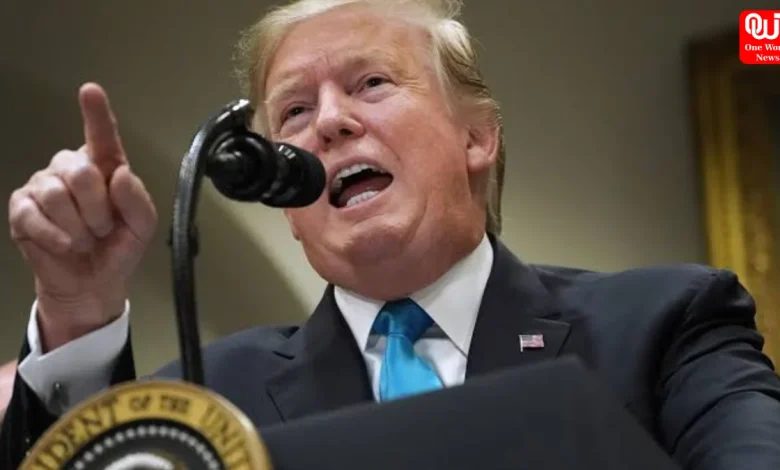Donald Trump’s new tariffs hit dozens of countries, effective August 7.
A New Era of Tariffs: A Global Shift in Trade Policy

From 10% to 41%: Donald Trump’s New Tariffs Hit Dozens of Countries (Aug 7)
The US administration has recently announced a new set of tariffs that are destined to take effect on the 7 th of August in a move aimed at redefining the global trade relations. In a “reciprocal tariff” system set forth in the executive order, many new duties are being imposed on imports, not just into the United States but also by dozens of countries toward the United States, and all the rates will be starting at least 10 percent and increasing up to 41 percent. Such a combative strategy that has been rationalized by the administration as a necessity to rectify perceived unfair trading behaviors and systemic trade deficits has raised a combination of fearfulness and statesmanship throughout the globe.
The new tariff policy shifts towards less uniform policy towards utilization of differentiated rates on the basis of each country. Whereas the default rate of 10 per cent will be applicable to most of the unlisted nations, there is a given rate which is considerably higher and has been identified in more than 60 countries and territories. The purpose of having different tariffs seems to be associated with the mixture of the factors, such as the previous trade balances, negotiations that still go on, and even geopolitical issues. This has resulted in a scramble of last minute negotiation and bargaining as some countries have been able to negotiate better terms than others do and others are left to pick up full consequence of newly imposed duties.
The tariffs are the key component of a greater idea of the administration, which is focused on American centricity of economic policies and therefore restoring equilibrium of world trade in the favor of the United States. According to their proponents, the tariffs would be used to protect the industries in America, provide job opportunities and raise substantial revenue to the government. In fact, reports released lately signify that there has been an absolute rise in tariff revenue during the first half of the year and the amount is already higher than what had been the previous year.
But critics caution that the policy could result in higher costs for U.S. consumers, retaliation in the form of tariffs from affected countries, and a generalized disruption of global supply chains. And some analysts fear the strategy can damage long-standing diplomatic relationships, causing countries to search for new trading partners outside the U.S.
Read more: Dystopian Fashion – A Visionary Glimpse into the Future Through Textiles
The Full List: Who Bears What-
The new tariffs create a complex and diverse international landscape. Countries are subject to a variety of duties; the rates reflected the various outcomes of negotiations, or lack thereof. Some countries will now face unprecedented levels of taxation on exports to the U.S. Syria and Switzerland will be paying some of the highest rates at 41% and 39% respectively. Other countries subject to reasonable amounts of duties include Laos and Myanmar (40%); Iraq and Serbia (35%).
Most major economies and trading partners will also be subject to high rates of tariffs. For example, we will levy a 25% tariff on India and a 20% duty on Taiwan. Other high rates include 19% for countries such as Pakistan, Malaysia, and the Philippines; and for countries such as Japan and South Korea that reportedly received a lower rate at 15%, it may have involved some last-minute negotiation.
read more: How to Have a Tech-Free Weekend – Even If You Think You Can’t
The full list of countries and their respective new reciprocal tariff rates includes:
* 10%: Brazil, Falkland Islands, United Kingdom.
* 15%: Afghanistan, Angola, Bolivia, Botswana, Cameroon, Chad, Costa Rica, Côte d’Ivoire, Democratic Republic of the Congo, Ecuador, Equatorial Guinea, Fiji, Ghana, Guyana, Iceland, Israel, Japan, Jordan, Lesotho, Liechtenstein, Madagascar, Malawi, Mauritius, Mozambique, Namibia, Nauru, New Zealand, Nigeria, North Macedonia, Norway, Papua New Guinea, South Korea, Trinidad and Tobago, Turkey, Uganda, Vanuatu, Venezuela, Zambia, Zimbabwe.
* 18%: Nicaragua.
* 19%: Cambodia, Indonesia, Malaysia, Pakistan, Philippines, Thailand.
* 20%: Bangladesh, Sri Lanka, Taiwan, Vietnam.
* 25%: Brunei, India, Kazakhstan, Moldova, Tunisia.
* 30%: Algeria, Bosnia and Herzegovina, Libya, South Africa.
* 35%: Iraq, Serbia.
* 39%: Switzerland.
* 40%: Laos, Myanmar (Burma).
* 41%: Syria.
those with current duty rates above 15% will not be affected by the European Union, while those with current duty rates below 15% will be subject to a new reciprocal tariff equal to 15% less the current duty rate. With worldwide ramifications anticipated in the upcoming weeks and months, the widespread implementation of these levies marks a significant change in American trade policy.
We’re now on WhatsApp. Click to join.
Like this post?
Register at One World News to never miss out on videos, celeb interviews, and best reads.







